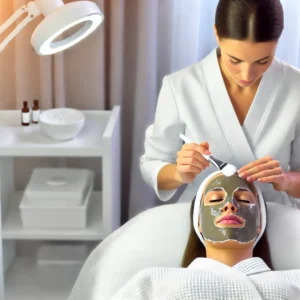Retreatment in dentistry refers to a procedure performed on a tooth that has previously undergone treatment but has not healed as expected or has developed new problems. In most cases, this term applies to root canal retreatment, which involves re-treating a tooth that has had an earlier root canal therapy but has developed complications such as infection, pain, or reinfection of the root canals. Retreatment aims to preserve the natural tooth by addressing and resolving any issues that have occurred after the initial treatment.
Reasons for Retreatment
- Persistent or New Infection: After the initial root canal treatment, the tooth may not heal properly, or new bacteria may enter the tooth, leading to an infection.
- Incomplete Cleaning or Shaping: The original treatment may have missed certain canals, or the root canal system may not have been thoroughly cleaned and disinfected, leading to persistent infection.
- Cracked or Damaged Crown: If the crown or filling placed after the initial treatment becomes cracked, damaged, or loose, bacteria can enter and reinfect the tooth.
- Complicated Root Canal Anatomy: Some teeth have complex root canal anatomy with additional canals that may have been overlooked during the initial treatment.
- Restoration Delay: If there was a delay in placing the final restoration, such as a crown, bacteria could re-enter the treated tooth, causing reinfection.
Symptoms Indicating the Need for Retreatment
- Persistent Pain: Ongoing pain after the initial root canal treatment is a sign that retreatment may be needed.
- Sensitivity: Persistent sensitivity to hot or cold temperatures.
- Swelling or Abscess: Swelling of the gums, a pimple-like bump on the gums (fistula), or a recurring abscess around the treated tooth.
- Discoloration: A previously treated tooth that turns dark or shows signs of discoloration may indicate that retreatment is necessary.
How Retreatment Is Performed
- Assessment and X-Rays: The dentist or endodontist will assess the condition of the tooth and take X-rays to evaluate the root canals, any infection, and the condition of the existing filling material.
- Local Anesthesia: Local anesthesia is administered to numb the area around the affected tooth.
- Access Opening: The dentist will create an access opening through the existing crown or restoration to reach the root canals. If the tooth has a crown, it may be removed temporarily or left intact, depending on the situation.
- Removal of Old Root Canal Filling: The old filling material (usually gutta-percha) is carefully removed from the root canals using specialized instruments. This allows access to the canals for cleaning and retreatment.
- Cleaning and Shaping the Canals: The root canals are thoroughly cleaned, disinfected, and reshaped. Special care is taken to locate any missed canals or other problems that were not addressed during the initial treatment.
- Filling the Canals: Once the canals are cleaned and reshaped, they are filled with fresh gutta-percha or another suitable material to seal them and prevent bacteria from re-entering.
- Restoration: The access opening is sealed with a temporary filling. Later, a new crown or permanent filling is placed to protect the tooth and restore its function.
Benefits of Retreatment
- Tooth Preservation: Retreatment aims to save the natural tooth and restore its function, preventing the need for extraction.
- Pain Relief: Retreatment can alleviate the pain or discomfort associated with an infected or improperly treated tooth.
- Eliminates Infection: By removing bacteria and disinfecting the canals, retreatment eliminates the source of infection, promoting healing and preventing further complications.
Challenges of Retreatment
- Complex Root Anatomy: Some teeth have complicated root anatomy that may be difficult to fully access and treat, even during retreatment.
- Weakened Tooth Structure: A tooth that has already undergone root canal treatment may be more fragile or weakened, which can complicate retreatment.
- Higher Risk of Fracture: The retreatment process can put additional stress on the tooth, increasing the risk of fracture, particularly if the tooth has had multiple procedures.
Alternatives to Retreatment
- Apicoectomy (Endodontic Surgery): If retreatment is not feasible or successful, an apicoectomy may be performed. This is a surgical procedure that involves removing the tip of the tooth’s root and the infected tissue.
- Tooth Extraction: If the tooth cannot be saved, extraction may be necessary. After extraction, the missing tooth can be replaced with a dental implant, bridge, or partial denture.
Retreatment vs. Extraction and Replacement
- Retreatment: When a tooth has a chance of being saved, retreatment is usually the preferred option. Preserving natural teeth maintains normal biting and chewing forces and avoids bone loss that can occur with tooth extraction.
- Extraction and Replacement: In cases where retreatment is not possible or if the tooth is too weak to function properly, extraction may be recommended. Replacement options, such as implants, are effective but are generally more costly and involve additional procedures.
Success Rate of Retreatment
The success rate for root canal retreatment is generally high, especially if performed by an experienced endodontist. However, it can vary depending on factors like the complexity of the tooth’s anatomy and the presence of infection. On average, the success rate for retreatment is 60% to 90%. Proper aftercare and regular dental check-ups are essential for maintaining the health of the retreated tooth.Aftercare for Retreatment
- Pain Management: Some discomfort or mild pain is normal after retreatment. Over-the-counter pain relievers like ibuprofen or acetaminophen can help manage any discomfort.
- Avoid Hard Foods: Avoid chewing on the treated tooth until it has been restored with a crown or permanent filling.
- Good Oral Hygiene: Maintain good oral hygiene by brushing twice a day, flossing daily, and using an antibacterial mouthwash.
- Regular Check-Ups: Attend regular dental check-ups to monitor the healing process and ensure that the retreated tooth remains healthy.
Other Services
- Esthiderm facial with Baby Botox Mesotherapy
- Radio frequency for lifting and infusing collagen
- Esthiderm facial with lifting mask
- Hair Scalp HydraFacial
- Root Strengthening and Hair Growth Treatment
- Hair Loss Treatment
- Meso Therapy
- Meso Botox
- Chemical Peeling
- Aqua Gold
- PRP
- Dark Circles
- Pigmentations
- Instant Glow Vitamins
- Open Pores
- Acne Scars
- Intensive Hyaluronic Treatment
- Intensive Vitamin C Treatment
- Black & White heads removal (Manual extraction)
- Hydrafacial (With Microdermabrasion)
- OxyGeneo Treatment
- HYDRAFACIAL WITH DETOX
- HYDRAFACIAL WITH VITAMINS
- DEEP HYDRAFACIAL
- Male laser Hair Removal
- Female hair removal laser
- INVISALIGN
- FLOURIDE APPLICATION
- ZIRCONIA CROWNS, BRIDGES
- NIGHT GUARD
- SIMPLE EXTRACTIO
- SURGICAL EXTRACTION
- ROOT CANAL TREATMENT (RCT)
- VENEERS PER TOOTH
- FILLINGS
- SNAP ON SMILE (UPPER/LOWER)
- Home kit whitening
- NANO TEETH WHITENING
- SCALING AND POLISHING



